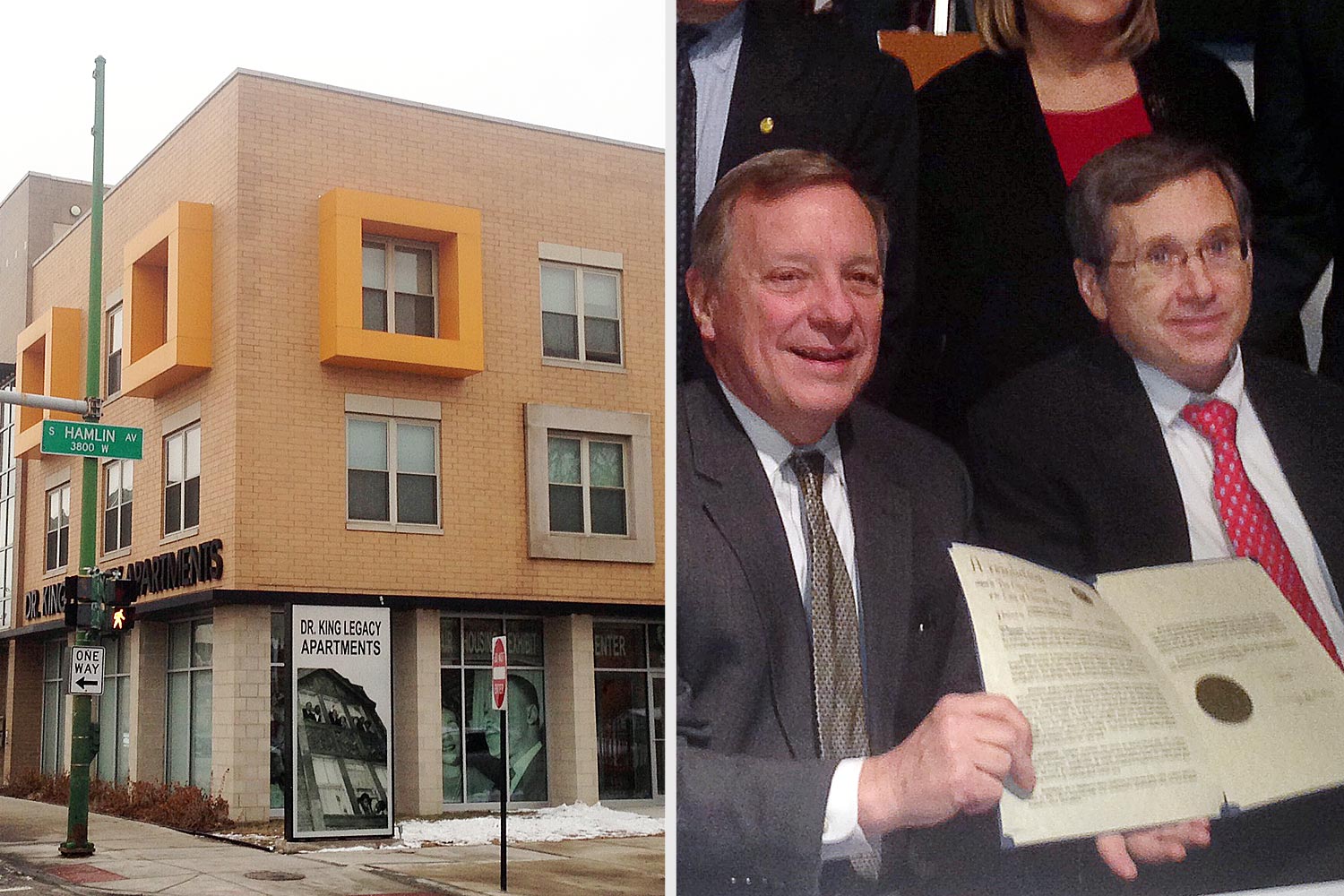In the past few days, two Chicago housing sites with enormous historical significance have both taken steps toward getting more of the recognition they deserve.
In Pullman on Friday, the two U.S. senators from Illinois, Dick Durbin and Mark Kirk, and U.S. Rep. Robin Kelly (2nd) announced they’re going to introduce legislation this week declaring the city’s Pullman neighborhood a national park. As envisioned, the park will tell the story of railcar czar George Pullman’s planned model town and the worker unrest there that led to, among other things, the creation of Labor Day.
And in Lawndale on Sunday, a permanent exhibit honoring Rev. Martin Luther King, Jr.’s work in Chicago for fair housing opened on the site of the apartment where the civil rights leader and his family lived part-time in 1966. Although the exhibit soft-opened on the King holiday last Monday, its official opening Sunday came on the 48th anniversary of King moving into a third-floor apartment. After the riots that followed his 1968 assassination, the building was demolished, and the land stood empty for four decades. A replacement apartment building was completed on the site in 2011; the new MLK Fair Housing Exhibit Center is on that building’s ground floor.
The connection between the two is much deeper than this week’s coincidence of timing.
At the Pullman announcement Friday, Sen. Kirk said that part of “the story in Pullman is the story of advancing dignity.” He was referencing Pullman as the birthplace of the first primarily African-American labor union, which the senator suggested was an extension of Illinois’s historic position as the first state to ratify the 13th Amendment, banning slavery.
Follow that same story into the mid-1960s, and it connects directly to King’s work here attempting to advance the dignity of African-American renters and homebuyers.
At both the Pullman and Lawndale sites, the stated aim is to attract visitors by telling the sometimes dark stories that happened there. A big part of Pullman’s appeal derives from its quaint architecture, but the trio of legislators and the many others who were on hand at Friday’s announcement talked up the not-as-pretty part of its story: the strikes and riots. And there’s just no way to put a shiny gloss on King’s efforts here, where after a counter-protester threw a rock that hit him in the head, King said that “I have never seen mobs as hostile and as hate-filled as I have seen in Chicago.”
Of course, tourists are far less likely to go to 16th and Hamlin to see a 4,500-square-foot exhibit about fair housing than they are to go to 111th and Cottage Grove and wander around a charming 16-square-block neighborhood. And some people will be too intimidated by Chicago’s entrenched racial boundaries to visit either.
But for anyone in Chicago who believes in the long and often bumpy story of what Sen. Kirk so articulately called “advancing dignity,” both places should be on the itinerary.



